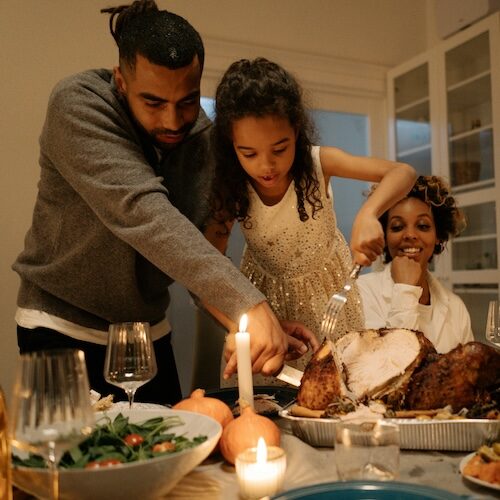We’re in the season of giving thanks and reflecting on the year’s end. It can feel hard or even insincere to act thankful when you carry shame and grief. Failure, relapse, condemnation, or just a sense of giving up because we’ll never change can feel overwhelming. So where do grace and gratitude fit it?
Grace is something many will say over their holiday meals with loved ones gathered round the table. Grace is also what meets us where we are without conditions of needing to be good enough and feeling hopeless and broken. We can embrace grace as kindness and compassion we don’t have to work hard to earn. It’s there for the taking. Gratitude is ignited upon receiving such grace. Don’t just be thankful, say so. Everyone wants to be appreciated, so extend thankfulness freely.
What does grace look like?
Grace is forgiving ourselves when we mess up again.
Grace is forgiving others who have hurt us.
Grace is taking another chance after we’ve failed.
Grace feels like peacefulness, clarity, hope, and inspiration to try again. We are not defined by our mistakes. Grace helps us break free of shame and unwanted habits. Grace gives us a fresh start. Author Anne Lamott is often quoting as saying, “Grace always bats last.”
Grace and gratitude go together.
What does gratitude look like?
Gratitude is shifting our focus to all that is good in life. Appreciating the small things and focusing at what really matters. When we take our thoughts off what’s not working or where we constantly fail, we find fuel for gratitude.
Gratitude releases shame and guilt. Our brains can be rewired when practicing mindfulness about the goodness and gifts in our lives. Rather than bemoaning another failure, remember the blessings and successes. As we gain a habit of grace and gratitude, more and more goodness and grace become evident in our lives.
Practicing Gratitude and Grace
Here are a few ideas to get you started practicing a more gracious and grateful way of life:
- Be kind to yourself and extend grace to others
- Don’t compare your life to anyone else’s
- Remember who and what is important to you
- Laugh more and with others––laughter is contagious
- Lighten up and release what doesn’t foster grace or gratitude
- Go for a walk and pay attention to what you see and hear
- Speak thankfulness to people, your neighbor, family, the people working at the drive-thru or store
- Reflect on ways you’ve grown
Grace Invites gratitude
As grace softens our heart toward ourselves and others, it invites gratitude in. When we grab hold of these two concepts––grace and gratitude––we are on our way to rewiring our minds. Having mentors, counselors, community, and a small group of people who really know us helps us think about what’s good, right, and true in our lives. Relationships remind us of our wins and what’s possible.
Consider challenges as invitations for growth. We don’t have to stay stuck. Integrating healthy habits strengthens emotional well-being and can protect against relapse and shame. Intentional changes bring change.


